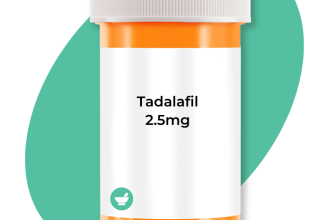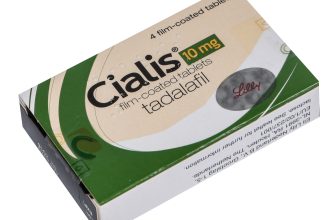No, rectal administration of Cialis isn’t a standard practice. Oral ingestion remains the primary and recommended method. However, certain situations might necessitate alternative routes. This guide will address those specific circumstances and offer relevant information.
Specifically, consider rectal administration only under strict medical supervision. This route might be explored in cases of severe nausea or vomiting preventing oral absorption, or if rapid absorption is critical and oral administration proves ineffective. Never attempt this without explicit instruction from your physician.
Important Note: The bioavailability – how much of the drug enters your bloodstream – differs significantly between rectal and oral administration. Your doctor will need to adjust the dosage accordingly to achieve the desired therapeutic effect. Expect careful monitoring and potential dosage adjustments if this route is pursued.
Before considering any alternative administration methods, discuss your specific medical circumstances thoroughly with your doctor or pharmacist. They can help you determine the safest and most effective approach to manage your condition. Reliable medical guidance is paramount.
- Cialis & Rectal Administration: A Comprehensive Overview
- Understanding Cialis Absorption Routes
- Potential Benefits and Risks of Rectal Cialis
- Comparing Rectal Administration to Oral Intake
- Absorption Rates and Duration
- Dosage Considerations
- Dosage and Administration Guidelines for Rectal Cialis
- Clinical Studies and Research on Rectal Cialis
- Absorption and Bioavailability
- Clinical Trials and their Limitations
- Current Research Directions
- Conclusion
Cialis & Rectal Administration: A Comprehensive Overview
Rectal administration of Cialis is not a medically approved route of administration. Pharmacokinetic studies focusing on this method are lacking. Therefore, we strongly advise against it.
Oral ingestion is the established and safe method for Cialis administration. This ensures predictable absorption and therapeutic effect. Other routes, like rectal administration, carry significant risks due to unpredictable absorption rates and potential for adverse effects.
The unpredictable absorption through the rectal mucosa can lead to inconsistent drug levels in the bloodstream, rendering the treatment ineffective or potentially harmful. Furthermore, rectal administration could irritate the sensitive rectal lining, causing discomfort and bleeding.
Always consult your physician before taking Cialis or any medication. They can provide tailored advice based on your health condition and medical history. Self-medicating with Cialis via unconventional routes is dangerous and could have serious consequences.
Reliable information on Cialis dosage and administration is readily available from your doctor or reputable medical sources. Seek professional medical guidance for any questions regarding Cialis usage.
Understanding Cialis Absorption Routes
Cialis, primarily absorbed through the small intestine after oral ingestion, achieves peak plasma concentrations within 2 hours. This oral route offers convenient administration. However, alternative routes exist.
Rectal administration offers a different absorption pathway. The rectum’s rich vascular network facilitates relatively rapid absorption, bypassing first-pass metabolism by the liver. This can lead to quicker onset of action compared to oral administration, though absorption rate varies based on formulation and individual factors.
Other routes, such as transdermal patches (currently unavailable for Cialis), aim to provide sustained release, minimizing peak and trough concentrations. However, these remain investigational or unavailable for Cialis at this time.
Important Note: Always consult your doctor before attempting any non-oral route of Cialis administration. Dosage adjustments may be necessary, and other medical factors can influence absorption and efficacy.
The choice of administration method depends on individual needs and medical advice. Your physician can help you determine the optimal route for your specific situation.
Potential Benefits and Risks of Rectal Cialis
Rectal administration of Cialis offers a potential route for bypassing first-pass metabolism in the liver, potentially leading to higher bioavailability and improved erectile function in some individuals. This can be particularly beneficial for those experiencing poor oral absorption.
However, this method isn’t without risks. Irritation and discomfort at the application site are possible side effects. Furthermore, absorption rates can be unpredictable, resulting in inconsistent drug levels. Precise dosage control is also challenging with rectal administration. The potential for systemic side effects, such as headache, flushing, and back pain, remains, though potentially altered in intensity and duration compared to oral ingestion.
Currently, limited clinical data supports the efficacy and safety of rectal Cialis. More research is needed to determine optimal dosages, absorption profiles, and the true extent of benefits and risks. Consult your physician before considering this route of administration. They can help you weigh the potential advantages against the uncertainties and possible drawbacks specific to your health profile.
Self-administration of medications not prescribed by a doctor carries inherent risks. Always follow your doctor’s instructions carefully, and report any adverse reactions immediately.
Comparing Rectal Administration to Oral Intake
Rectal administration of Cialis offers faster absorption compared to oral ingestion, leading to quicker onset of effects. Studies show peak plasma concentrations are reached significantly sooner rectally. However, oral intake provides more predictable and longer-lasting effects due to a more consistent absorption rate. Bioavailability varies considerably between the two routes; rectal administration generally achieves higher peak plasma concentrations but with a shorter duration of action.
Absorption Rates and Duration
Oral Cialis typically reaches peak plasma concentration within 2 hours, with effects lasting up to 36 hours. Rectal administration, on the other hand, can show peak levels within 30-60 minutes, although the duration is generally shorter, potentially lasting only 12-24 hours. This difference stems from the distinct physiological characteristics of the gastrointestinal tract and rectal mucosa.
Dosage Considerations
Dosage adjustments are necessary when switching between rectal and oral routes. A lower rectal dose may achieve a comparable effect to a higher oral dose, due to the differences in absorption and bioavailability. Always consult a physician to determine the appropriate dosage based on individual needs and chosen administration method. Improper dosage can lead to adverse reactions or ineffective treatment.
Dosage and Administration Guidelines for Rectal Cialis
Rectal Cialis administration isn’t a standard medical practice. Therefore, precise dosage guidelines are unavailable and should never be attempted without direct supervision from a qualified medical professional. Self-administering medication rectally carries significant risks.
Any attempt to use Cialis rectally should be done under strict medical guidance, possibly as part of a clinical trial. The doctor will determine the appropriate dosage based on individual factors like health status, age, and other medications.
Improper administration can lead to serious adverse effects. Always prioritize safe and effective medication use following a healthcare professional’s instructions.
| Important Considerations | Details |
|---|---|
| Dosage | Varies significantly based on individual needs and medical supervision. No standard dosage exists for rectal administration. |
| Administration Method | Rectal administration is complex and should only be performed under the direction of a healthcare professional. Improper administration increases the risk of side effects. |
| Potential Side Effects | Rectal irritation, absorption variability, and other potential complications exist. A doctor will explain these risks. |
| Monitoring | Close medical supervision is crucial if rectal administration is considered. Regular monitoring ensures safety and efficacy. |
Always consult your doctor before considering any alternative method of Cialis administration. Your doctor can discuss appropriate treatment options for your specific needs.
Clinical Studies and Research on Rectal Cialis
While limited, research suggests rectal administration of Cialis may offer benefits in specific cases. Studies are primarily focused on its potential for treating erectile dysfunction (ED) and benign prostatic hyperplasia (BPH).
Absorption and Bioavailability
Studies exploring rectal Cialis absorption show variable results. Factors influencing bioavailability include formulation, dosage, and individual patient characteristics. Research indicates a potential for faster onset of action compared to oral administration, but lower overall absorption is often observed.
- One small study indicated quicker onset of action, but with lower peak plasma concentrations.
- Another study highlighted individual variability in rectal absorption, necessitating personalized dosing strategies.
Clinical Trials and their Limitations
Large-scale, well-designed clinical trials specifically evaluating rectal Cialis are scarce. Existing research often comprises small sample sizes and lacks the rigorous methodology necessary to draw definitive conclusions.
- Published studies usually lack long-term follow-up data.
- The absence of placebo-controlled trials in many studies limits the reliability of findings.
- Further research is needed to fully understand the safety profile and long-term effects of rectal Cialis administration.
Current Research Directions
Current research focuses on optimizing drug delivery methods to improve absorption and reduce side effects. This includes exploring different formulations and administration techniques.
Conclusion
Rectal Cialis remains an area requiring further investigation. Available data suggests potential benefits in specific situations, but significant research gaps remain. Consult your physician before considering this route of administration.










